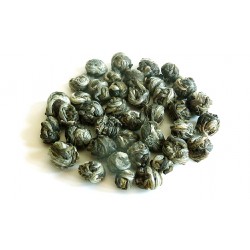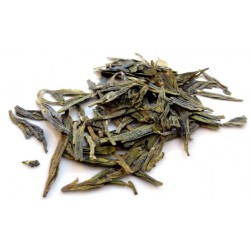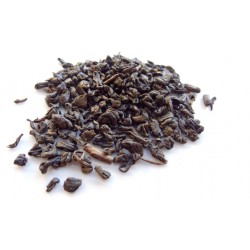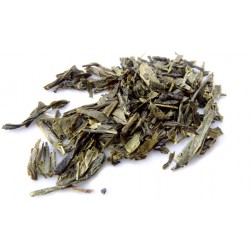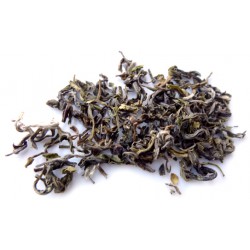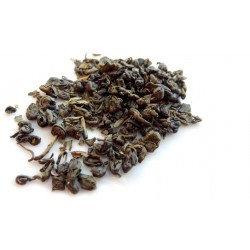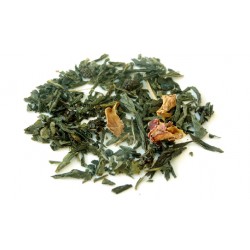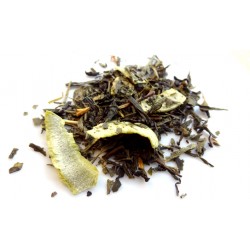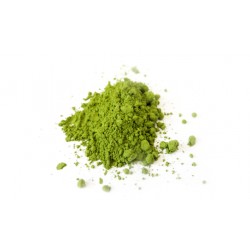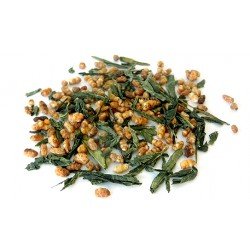Green tea has been one of those teas that seem to solve all kinds of problems. Since I was a child, people have claimed all kinds of benefits to green tea. From losing weight to fighting off cancer the benefits almost seem like an urban legend. Interestingly, most of the benefits people claim about Green tea seem to be supported by science. Despite the benefits, something I found interesting was that there are different types of green tea. It isn’t just the Lipton green tea bags you find in the grocery store. There are several varieties of this tea.
The following is a list of the different types of green tea.
- Jasmine Pearls
- Dragon Well
- Gunpowder
- Sencha
- White Monkey Paw
- Moroccan Mint
- Chunky Cherry
- Lime in the Coconut
- Stone Ground Ceremonial Matcha
- Imperial Gyokuro Genmaicha
Having the different types of green tea you may wonder, what is the difference between the green teas? Well in terms of benefits, they are all the same. After all, they are green teas. The difference comes in taste as each of the different types of green tea may have some additional ingredients added. In any case, since this is an article about green tea, we should at least review some of the benefits of green tea.
Benefits of Green Tea
No matter which type of green tea you use, the benefits are the same. The following list describes some of the benefits of green tea.
- Helps Fight Cancer
- Improves your brain function
- Helps you lose weight
- Fights depression
- Reducing your risk of cancer
- Protects your brain in old age
- Lower risk of infections
- Lower your risk of type 2 diabetes
- Fights allergies
Let’s look into detail about the different types of green tea.
Jasmine Pearls
Chinese Dragon Pearls or Jasmine pearls are made from hand-picked single buds from the ‘Fuding Dahao’ tea plant variety. The buds are then refined by hand into tiny ‘pearls’. Finally, jasmine flowers are added for fragrance and added flavor It is a very refreshing green tea and even more so with the added Jasmine.
Preparation
Use 6-8 pearls of Jasmine Pearls per cup of water after falling from a full boil, about 180o F. Steep the pearls from 2 to 3 minutes and enjoy a pick-up in your step!
Dragon Well
Lung Ching aka Longjing, or Dragon Well green tea, is the national drink of China and customarily is given to visiting heads of state. Like most other Chinese green tea, Dragon Well tea leaves are heated in a pan over an open flame to end the fermentation process. This fermentation occurs during the very tedious drying process. Dragon Well loose leaf green tea is best brewed in mineral water. Chinese folklore tells a story of rainwater staying at the surface of well water due to its ability to fly. This ‘floating water’ sometimes creates a twisting serpentine form in the well that resembles a dragon, hence the name ‘Dragon Well’.
Preparation
After bringing your ‘Dragon Water’ to a boil, let the water settle back down to around 180oF before steeping about 1 heaping teaspoon of tea per cup. Never steep more than 3 or 4 minutes.
Gunpowder
Gunpowder green tea also called Zhu Cha, production started way back with the Tang Dynasty which ran from 618 to 907 A.D. Gunpowder tea leaves are naturally withered, steamed, rolled, and then dried. Gunpowder green tea is still rolled by hand into small tight balls that make the tea leaves less susceptible to damage, allowing them to retain more of their flavor and aroma. It is believed that the English gave the tea this name due to the resemblance to the gun powder of their black powder muskets of the time.
Preparation
Use 1 even teaspoon of gunpowder tea for each cup of mineral or filtered water. Steep the tea for 2 to 3 minutes at about 180o F.
Sencha
Sencha means “steamed tea” and differs from Chinese green teas, which are typically pan-fired. After the steaming process, Japanese Sencha green tea leaves are hand-rolled, shaped, and dried. The steaming process creates a difference in the flavor between Chinese and Japanese green tea, with Japanese green tea having a more earthy, natural flavor, are more vibrant green in color and the tea leaves contain more vitamin ‘C’. The Japanese usually drink this loose leaf Sencha tea hot in the cooler months and usually chilled in the summer.
Preparation
Use 1 to 2 teaspoons of Sencha green tea leaves to each cup of filtered or mineral water. Steep in approximately 180o F (just below boiling) water for under 2-3 minutes. If you steep for too long, you could get a bitter flavor.
White Monkey Paw
White Monkey Paw green tea, also known as Bai Mao Hou, is a loose-leaf green tea made from the very young leaves and the bud of new season growth. It originates from the Wuyi Mountains in Fujian Province, China. The tea leaves are very carefully handpicked with a creative process to preserve the tea leaf form and then delicately steamed and dried. These perfect tea leaves resemble a monkey’s paw, hence the name. Similar to Silver Needle white tea, the ‘down’ on the leaves gives the leaves a silver appearance and indicates that these leaves were plucked very early in the morning and within the first two weeks of growth.
Preparation
Use 1 heaping teaspoon of tea to each cup of filtered or mineral water. Steep under 2-3 minutes in just under boiling water, or about 180o F
Moroccan Mint
This green tea is the national drink of Morocco. During my journey, I drank Moroccan mint tea a lot, especially now that I am married I drink this almost every day. This is basically gunpowder green tea with mint leaves to produce this delicious gunpowder green tea. Gunpowder tea production started with the Tang Dynasty. Gunpowder tea leaves are naturally withered, steamed, rolled, and then dried. Gunpowder tea is still rolled by hand into small tight balls that make the tea leaves less susceptible to damage, allowing them to retain more of their flavor and aroma.
Preparation
Use 1 even teaspoon of gunpowder tea for each cup of mineral water. Steep the tea for 1 to 2 minutes at about 180oF.
Chunky Cherry
Chunky Cherry green tea takes the smooth, healthy taste of Japanese Green Sencha tea and throws in some hearty cherry pieces and a handful of rose petals.
Preparation
Use 1 heaping tablespoon to each cup of just under boiling mineral water and steep for 1 to 2 minutes.
Lime in the Coconut
Lime in the Coconut green tea is a ridiculously tasty blend of superior Indian Assam and fine Chinese green teas tossed with shredded coconut, lime juice, and sunflower petals.
Preparation
Use 1 to 2 heaping teaspoons per cup of just below boiling (steaming) filtered water and steep for 2 to 3 minutes.
Stone Ground Ceremonial Matcha
Stone Ground Ceremonial Matcha comes from the most tender tea leaves that are then stone-ground in the ancient ways started over 800 years ago. The flavor has a vegetal background that is dominated by a sweet and incredibly smooth taste that you find on other matcha offerings. A rare find for matcha tea drinkers who are looking for something special.
Preparation
Koicha style matcha preparation: (recommended)
Add 3 heaping scoops (or 1 level teaspoon) of matcha to the chawan (traditional ceremonial matcha tea serving cup). Next, add approximately 40ml of hot, yet not boiling water. Filtered water is best and if you have the ability, the best temperature is 170°F. Wisk the matcha using a bamboo Chasen, then drink in bold, “inhaling sips” to fully enjoy the aroma and flavor.
Usucha style matcha preparation:
Follow the directions above, but only use 1.5 heaping scoops (or 1/2 teaspoon). Usucha style will taste slightly more bitter than Koicha.
Imperial Gyokuro Genmaicha
Imperial Genmaicha Organic Green tea is a traditional Japanese green tea. It is believed that the development of Genmaicha was by monks using rice as a filler to save money. This tradition quickly caught on as the blend of toasted rice and green tea (typically Sencha or Bancha) has a very soothing, pleasant flavor. Imperial Gyokuro is paired with toasted brown rice resulting in a highly aromatic medium-bodied green tea blend. High-quality Genmaicha is always made with toasted brown rice, which delivers a sweet, rich flavor; cheaper varieties are usually made with toasted white rice. This aromatic blended tea brings together the refreshing lightness, sweetness, and distinctive taste of roasted rice. This tea has a mild taste of sweet, rich tea with wonderful roasted, toasty rice flavor; it has less caffeine and tastes less astringent than other Green teas.
Preparation
Bring your mineral or filtered water to a boil, then let the water settle back down to around 180oF before steeping about 1 heaping teaspoon of tea per cup. Never steep more than 3 or 4 minutes.

